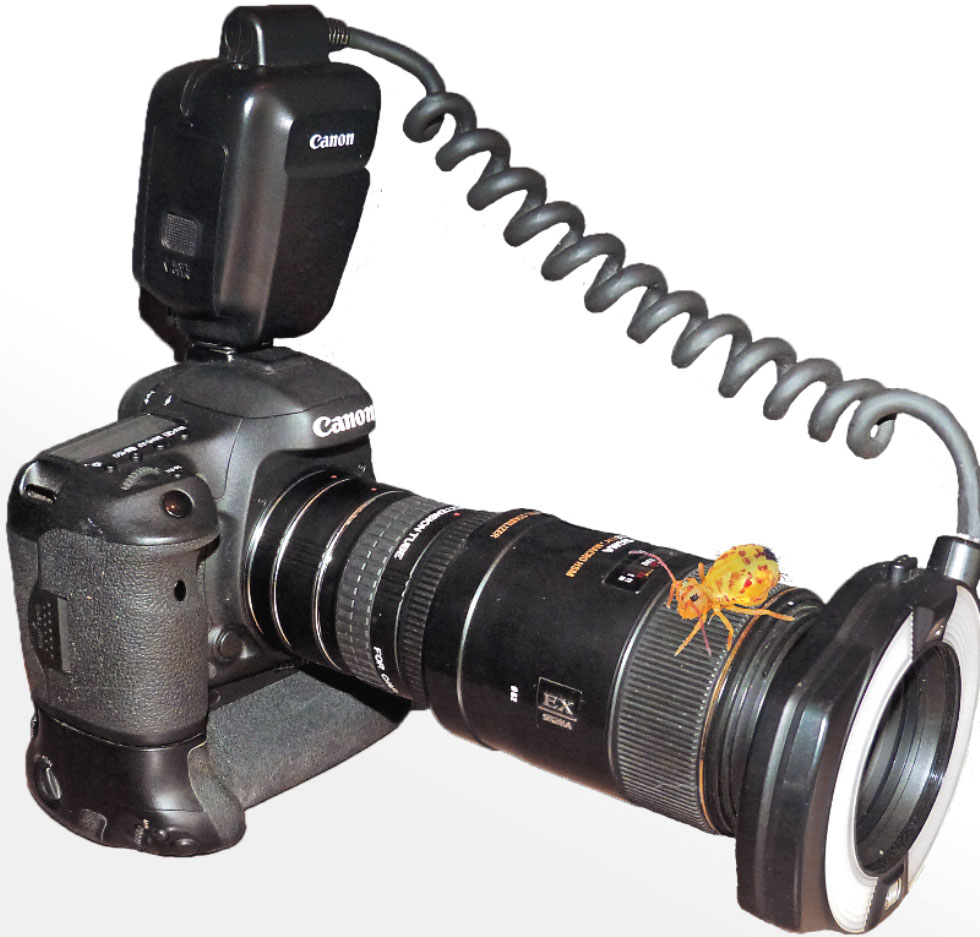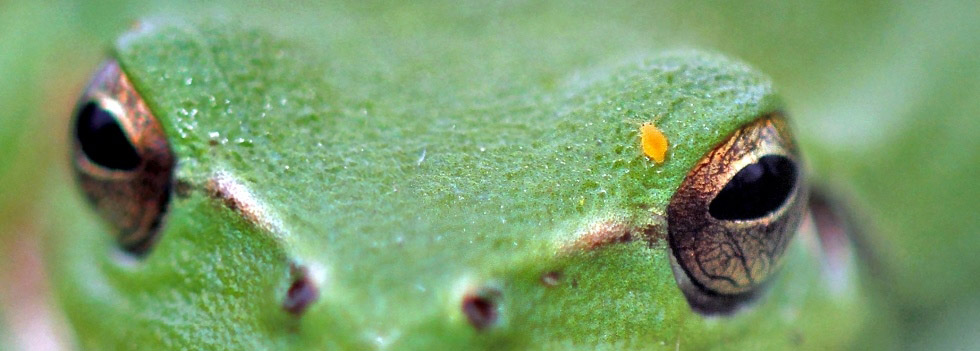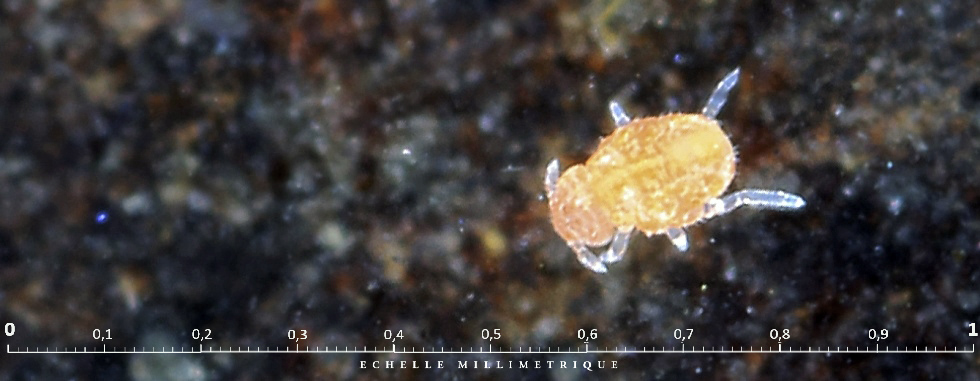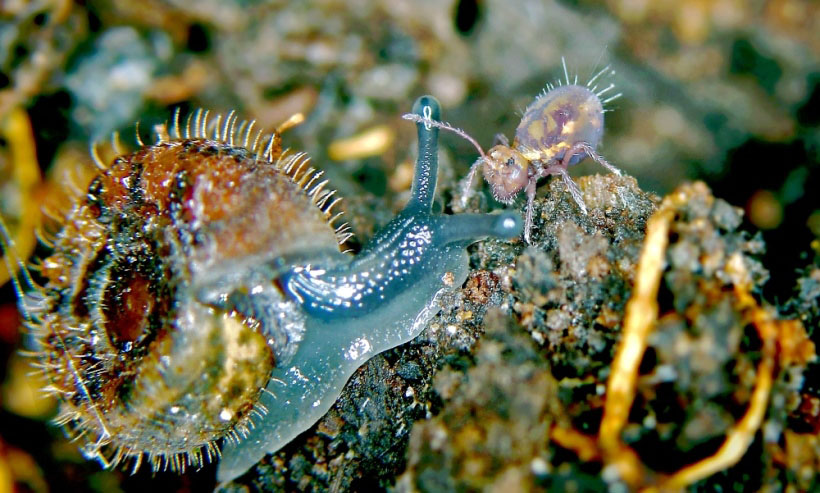
Amateur, I learned about animal photography with birds (see my bird pictures) and then I abandoned the telephoto lens to focus on macrophotography. On this occasion I discovered a world of extraordinary variety. Insects (see my insect pictures) and arachnids (see my spider images) were my first targets, but every year, when winter came, I was frustrated because my subjects were very rare until the beautiful days. While looking for small spiders, I once launched in search of springtails and not without difficulty. By dint of insistence, lifting dead leaves at the foot of a tree, I finally saw tiny creatures that jumped in all directions. I tried to shoot a few but the 1: 1 ratio of my macro lens was not strong enough to get a good result.
So I bought a zoom multiplier x 1.4, which allowed me to approach these small animals in better conditions. Luckily, they are very active from the end of autumn until spring, they do not fear the cold and need moisture, which explains why during the summer periods they are discrete. The first springtail I photographed are among the largest (Orchesella - about 4.5 mm). As I discovered new species, I quickly faced the pitfall of dimensions. Indeed, the Orchesella, which is already a very small subject, is still ten times larger than a good part of the springtail that I photograph today and which measure in the order of a millimeter or less (0.3 mm for the little ones). However, the more you reduce the size of a subject, the more you multiply the difficulties to photograph. These difficulties are of two types: technical (material necessary) and practical (precautions to be taken).

Note that some springtails can jump up to about twenty centimeters, which is 50 to 100 times their size (and poses some problems to photographers). As an illustration, let's imagine a man doing jumps of 150 meters *.
I use elongated rings so I can get closer to my subjects a few inches. Indeed, the minimum focusing distance of a macro lens does not allow to approach the subject to less than fifteen centimeters, which is much too much. In some cases, despite three rings extended between the camera and the lens, the approximation is still too weak. I therefore use windscreens that act as magnifying glasses that are put in front of the lens and can be mounted separately or contiguous. After a few months, I could not do without a more powerful goal. My choice fell on the inevitable Canon 65 mm-1 / 2.8 capable of ratios of magnification up to 5: 1, so there is the margin, but also new challenges...

When one is a few centimeters away from the subject, one inevitably generates shadows, a flash is therefore almost indispensable, but the light from a "cobra" type flash fails to illuminate a subject as close to the lens. It is therefore necessary to use an annular flash which is fixed on the end of the latter. The difficulties associated with the photographer himself are also far from negligible. The subject must already be identified, which usually requires lying or bowing on one's knees. The position is uncomfortable when you stay long minutes, which led me to use knee pads systematically. It is not easy to fit this type of subject well. At the slightest movement, the subject goes out of the field and, given the very low sharpness range, you often have to take a new look out of viewfinder to locate the precise position of the subject before framing it again. It is also illusory to generalize the use of the photo foot, it would be without counting that many springtails jump and thus themselves place out of field which would require a new placement of the foot.
Below, the smallest springtail I have been able to photograph to date. Found at the edge of a temporary pond, it is called Megalothorax minimius, is blind, measures around 20 hundredths of a millimeter and moves without stopping. To distinguish it with the naked eye is already a feat because it can be confused with a grain of dust suspended on the water. Fortunately, the dark background favors its location. Then it takes a little obstinacy.
(For the record, the pond where I spotted it for the first time, the afternoon of 15-03-2018, is located 2.5 km from the parking of my vehicle; unfortunately back home I found that my first images were all overexposed. So I waited impatiently for the night to go back to his quest the next morning. I went to the same place, next to the same old branch and on the same half-immersed leaves and it was still there. In the end, this bug of 0.2 mm, totally insignificant, will have made me walk only 10 km on foot for the pleasure of seeing it again, and we were only then our first "appointments".
When I tell this type of episode to some of my friends, I often see their looks a little skeptical ... Fortunately, I have the naivety do not doubt for a moment that they can see in me something else than a simple tracker of springtails.)

Mountings with gallows and counterweight exist but they are very bulky and expensive, but mini-feet solidaire case can be an interesting solution. Once the subject is framed, it is still necessary to firmly support the shooting equipment which is quite heavy and stall by any possible means (I use a pad filled with rice that allows a stable support).
Finally, we freeze, we cut our breath and there we can "shoot".

Despite all these precautions, there is a high proportion of waste because, for example, on a Dicyrtomina of one or two millimeters, the focus must be on the head or better the eye plate which measures at most one tenth of a millimeter. Indeed, one of the basic rules in animal photography is that the subject's eyes are clear.
* I allow myself here this extrapolation that to image my intention, because the masses and the resistance of the structures do not evolve in a linear way. Actually in my example the envelope and the skeleton of the human body would not resist the acceleration (the impact of the mass entering the real equation with a cubic factor).
Pictures: Philippe Garcelon:
- Collembole resting on the arch of a tree frog: obj. 105 mm + multiplier x 1.4.
- Collembole on a petal of daisy: 105 mm alone.